Key takeaways:
- Organic wine production emphasizes sustainability, biodiversity, and a strong connection to the land.
- Adopting sustainable farming practices leads to healthier soil, more resilient vines, and reduced financial reliance on external inputs.
- Key practices include composting, crop rotation, and eco-friendly pest control, which foster a balanced ecosystem and enhance grape quality.
- Choosing the right grape varieties based on local conditions can significantly impact organic wine production and personal connection to the vineyard.
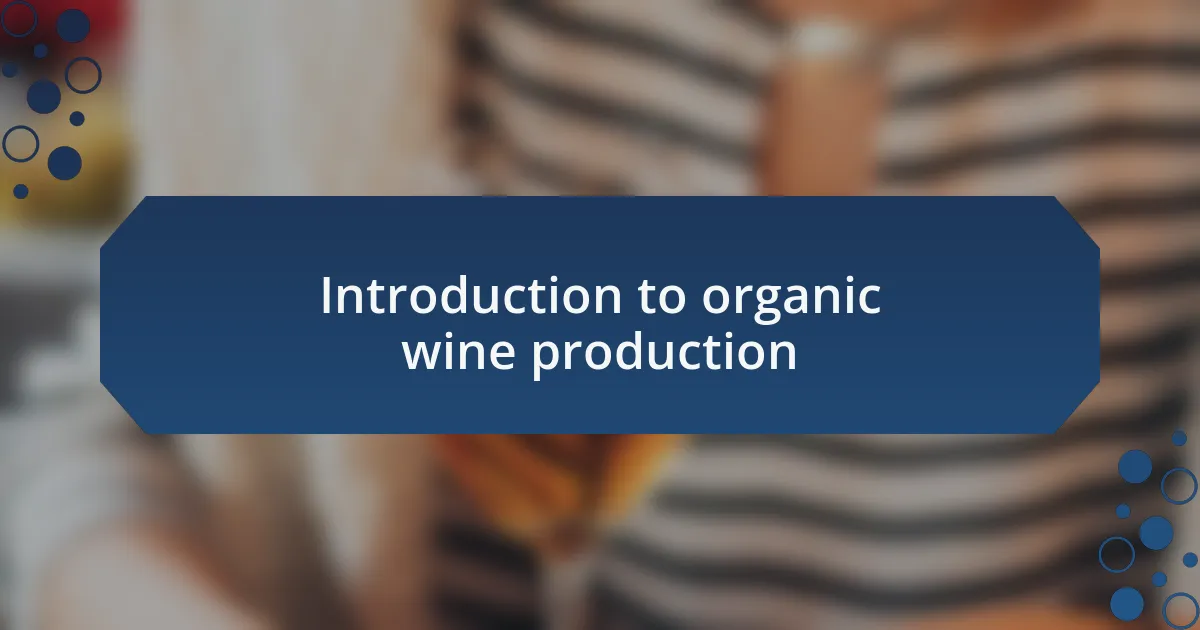
Introduction to organic wine production
Organic wine production represents a thoughtful approach to winemaking that emphasizes sustainability and respect for the environment. Imagine walking through a vineyard where the soil is alive with microorganisms, all contributing to the health of the vines. This commitment not only enhances the quality of the grapes but also fosters a deeper connection to the land.
My journey into organic wine production began with a simple question: How can we create exceptional wine without harming the ecosystem? Exploring organic practices, I discovered that it’s not just about avoiding synthetic chemicals. It’s about nurturing biodiversity and fostering a balanced ecosystem, which I found deeply rewarding both personally and professionally.
Every decision in organic winemaking—whether it’s planting cover crops to enrich the soil or employing natural pest control—stems from a desire to create a harmonious relationship with nature. When I shifted my vineyard management approach, I noticed the vibrant biodiversity around me flourish. How could I have overlooked the profound impact these changes could have? The answer was clear: embracing organic methods transformed not just my wine but my entire perspective on winemaking itself.
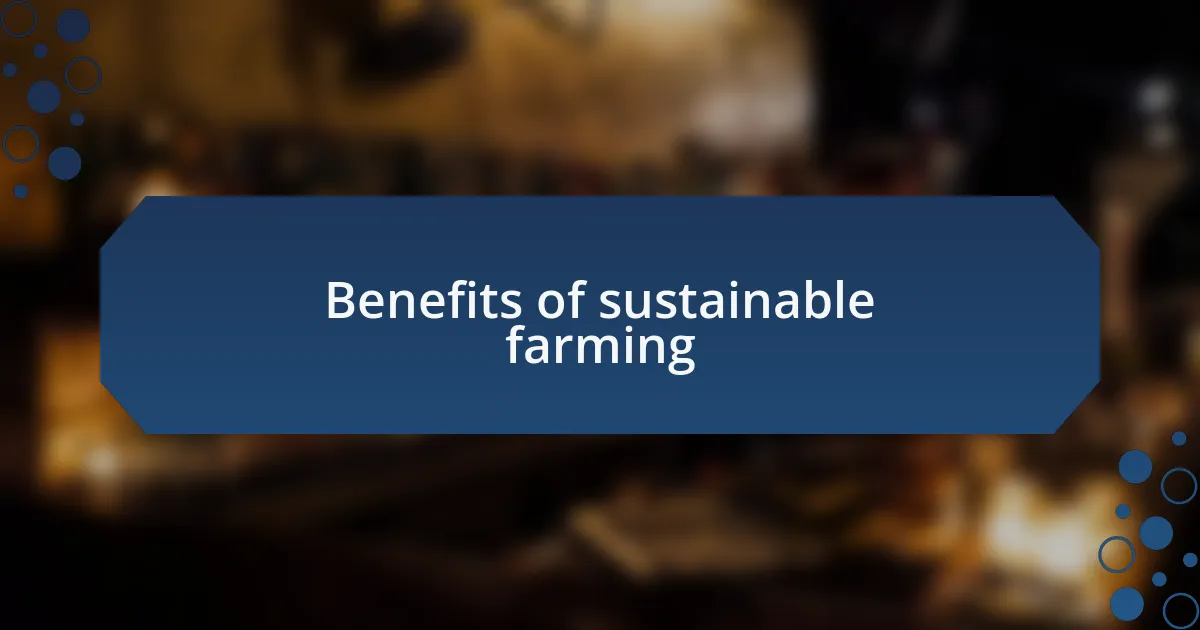
Benefits of sustainable farming
Sustainable farming offers numerous advantages that extend beyond the vineyard itself. For instance, I witnessed firsthand how adopting organic practices led to healthier soil, which in turn produced more resilient vines. The joy of tasting grapes that are richer in flavor and complexity was both a surprise and a delight, reaffirming my dedication to sustainability.
Moreover, switching to sustainable methods significantly reduced my reliance on external inputs. I remember the moment I realized how much money I was saving by using natural pest control instead of chemical treatments. That not only eased my financial burden but also fostered a rewarding sense of independence and connection to my land—it’s amazing how empowering it feels to solve problems with nature’s own resources.
Lastly, the impact on local wildlife has been profound. I used to view my vineyard as a stand-alone operation, but now I see it as part of a larger ecosystem. Encouraging beneficial insects and birds to thrive led to unexpected surprises, like enjoying the sight of a family of hawks nesting nearby. It made me wonder how many more wonders lay hidden within sustainable practices, waiting to be discovered.
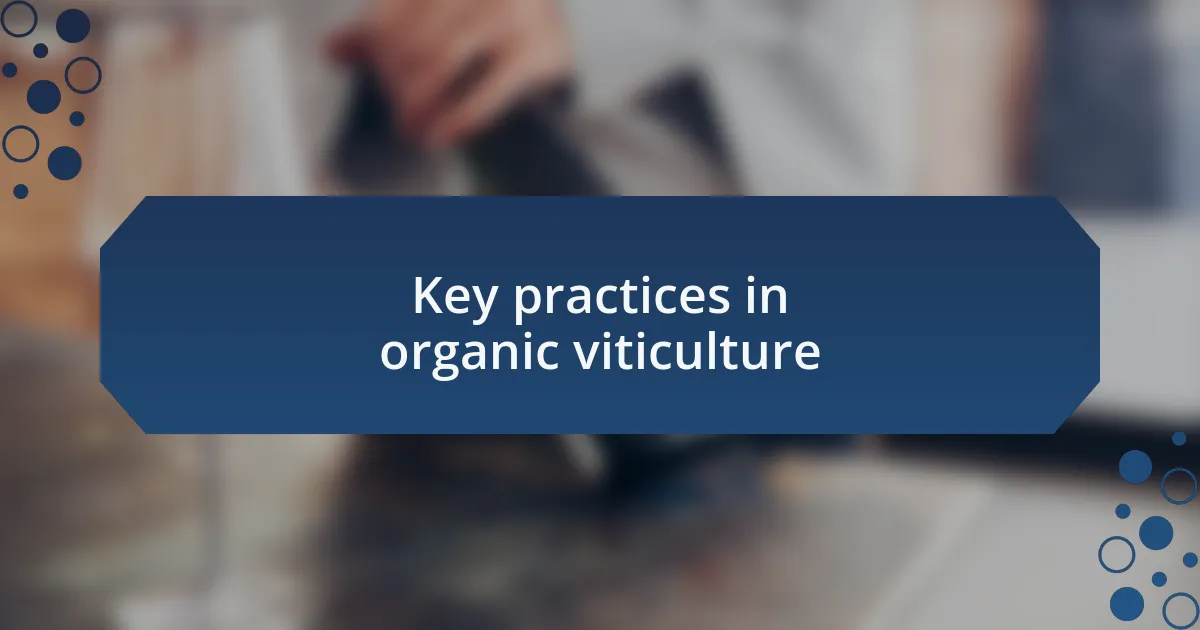
Key practices in organic viticulture
Key practices in organic viticulture emphasize the importance of soil health as the foundation of vine growth. I remember when I first began composting, and the smell of rich, earthy nutrients mingling with the air was intoxicating. The transformation of my soil was palpable, resulting in grapes that didn’t just grow but thrived, embodying the very essence of their terroir.
Crop rotation has also become a cornerstone of my vineyard management. Initially, I was skeptical about how planting different varieties would impact my yields. To my surprise, this practice enhanced biodiversity, leading to a more resilient ecosystem where pests were naturally kept in check. The more I learned about the interconnectedness of plants, the more fascinated I was by nature’s complexity – it reminded me that sometimes, stepping back is the key to moving forward.
Water conservation techniques, such as drip irrigation, have further redefined my approach to viticulture. I often reflect on those hot summer days when water was scarce. Implementing these precise watering methods not only saved resources but also cultivated healthier vines that could weather the climate’s whims. Have you ever considered how small adjustments can create significant changes? It’s been a revelation to understand that every drop counts and that our choices today impact tomorrow’s harvest.

My journey to sustainable practices
As I embarked on my journey toward sustainable practices, I found myself drawn to the idea of working in harmony with nature rather than against it. One day, after a long afternoon in the sun, I noticed the local wildlife flourishing around my vines. That moment ignited a passion in me to create an environment that nurtures not just my grapes but the entire ecosystem. Have you ever experienced such an epiphany that shifted your perspective significantly?
Transitioning to organic methods was not without its challenges. There were days when I felt overwhelmed, grappling with the learning curve of pest management without synthetic chemicals. I recall a particularly rainy season where fungal disease threatened my crop. It was a stark reminder that nature can be unpredictable, yet it also propelled me to explore natural remedies that led to surprising breakthroughs. Each obstacle became a lesson, teaching me resilience in the face of uncertainty.
Connecting with like-minded farmers during workshops profoundly impacted my path. Sharing experiences over a cup of organic coffee, I often found invaluable insights in our discussions. One farmer’s story about their success with cover crops opened my eyes to new possibilities. Reflecting on our collective experiences made me appreciate that sustainable practices are not just a personal endeavor; they are part of a larger community effort. Isn’t it amazing how we can learn and grow together?
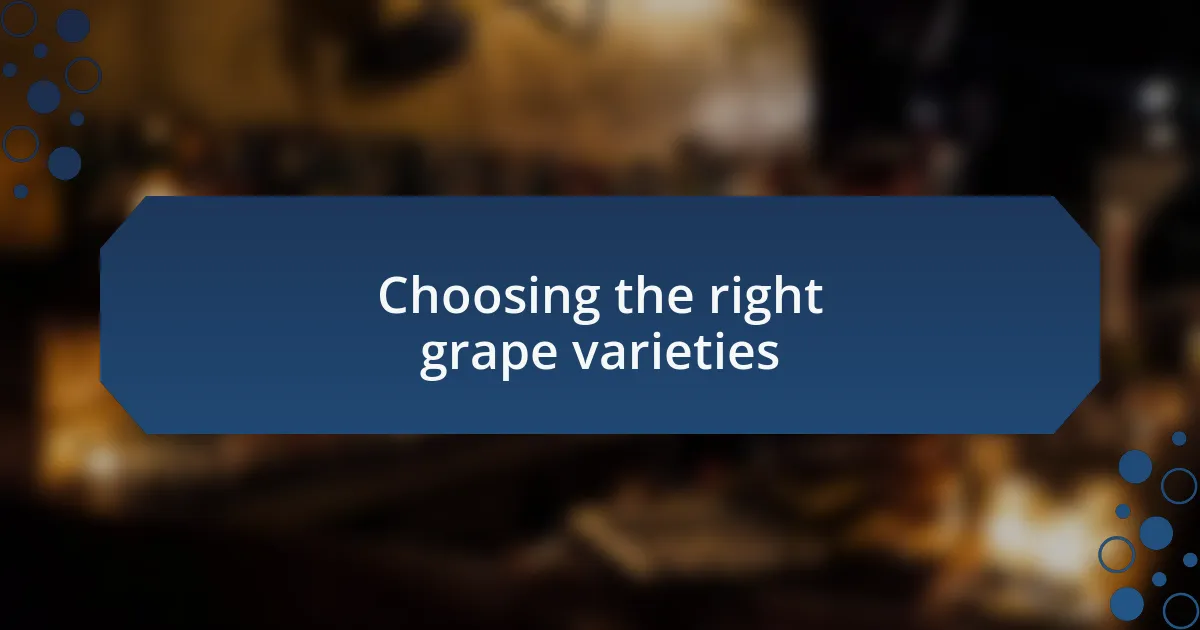
Choosing the right grape varieties
Choosing the right grape varieties is pivotal to sustainable vineyard management and can make all the difference in my organic wine production journey. I vividly remember my first year selecting grapes, when I opted for a variety known for its resilience against pests and diseases. The success of those grapes not only aligned with my sustainable goals but also boosted my confidence as a winemaker. Have you ever picked a variety that felt like the perfect match for your vision?
As I delved deeper into varietal selection, I learned that local climate and soil conditions play critical roles. I spent countless hours testing different combinations in my vineyard, documenting their performance under varying conditions. Strangely enough, one lesser-known variety surprised me with its adaptation to my soil type. It thrived where others struggled, reminding me that sometimes the best choices are the ones we least expect.
Choosing the right grape varieties also means creating an emotional connection to the land and the wine produced. I recall tasting a vintage made from a variety I had nurtured for years, and feeling an overwhelming sense of pride. Each sip told the story of the care I poured into my vineyard. How does the very essence of a grape variety resonate with your experience in winemaking?
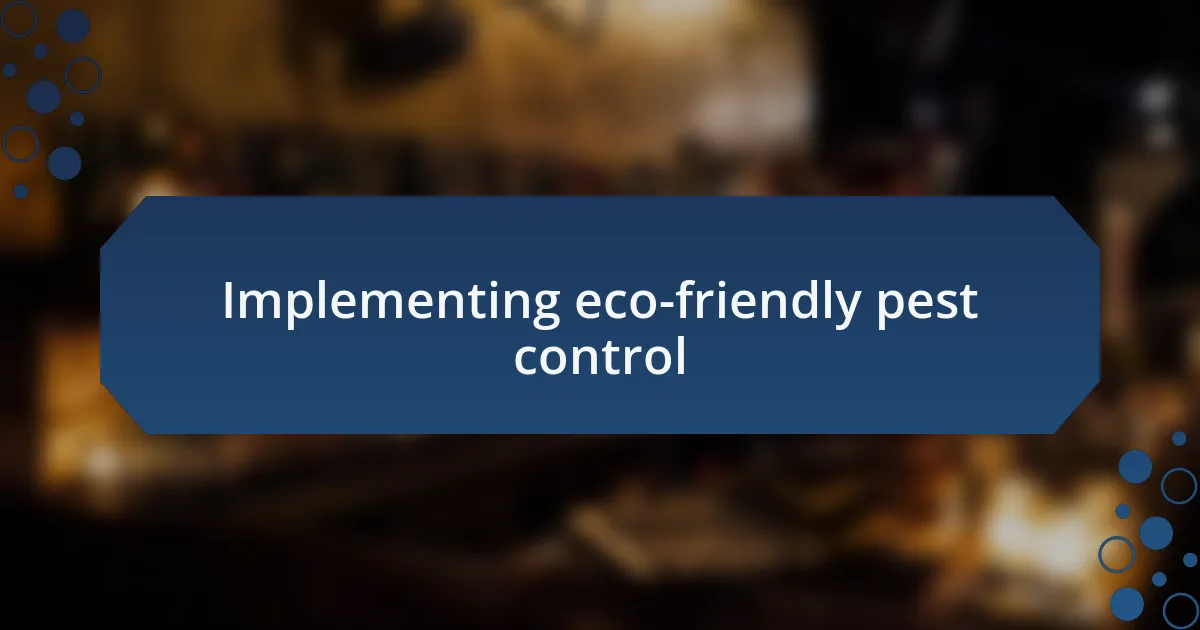
Implementing eco-friendly pest control
Implementing eco-friendly pest control has truly transformed my approach to vineyard management. I remember one season when I decided to introduce beneficial insects, like ladybugs, into my vineyard instead of reaching for chemical pesticides. Watching those tiny creatures multiply and feast on the aphids was a rewarding experience, reinforcing my belief that nature often has its own solutions.
As I explored alternative pest control methods, I stumbled upon companion planting. By growing specific plants alongside my grapes, I noticed a remarkable reduction in pest populations. It was fascinating to witness how the natural scents of certain herbs could deter unwanted insects while attracting pollinators. Have you ever observed the relationship between plants in your own garden? The interconnectedness can be truly inspiring.
Ultimately, the shift to eco-friendly practices required patience and trust in the process. I vividly recall the anxiety I felt during my first harvest without pesticides—wondering if my vines could withstand the challenge. When I finally tasted the grapes, their quality surpassed all expectations. This moment solidified my commitment to sustainability, proving that with a little innovation and faith in nature, we can cultivate a healthy vineyard. How have you embraced challenges in your journey of sustainable farming?